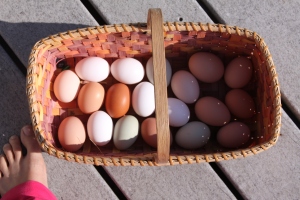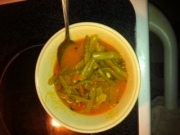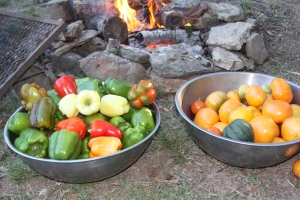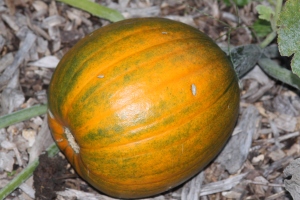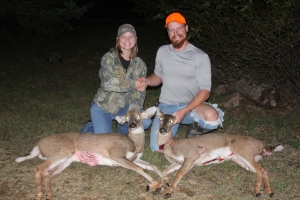Supplemental Lighting For Laying Hens
So, its been a great spring and summer with a daily basket full of eggs, as a homesteader you couldn’t be more thrilled. Then, the temperature drops, the leaves turn colors, and the hours of daylight begin to shrink-along with your bounty of eggs. You walk into the coop one morning and it looks as if a pillow fight has occurred, the coop is more quite, and your once fluffy chickens look a little worse for wear. The autumn molt has began and the process should be allowed to continue, they usually lose their feathers in patches, the most noticeable being the neck and tail feathers (a good time to collect for crafts). The process takes one to three months depending on what kind of nutrition they are given, breed, and age of the chicken. They need extra protein at this time to regrow new feathers and get back to laying eggs and staying warm. The first molt usually occurs their second fall after their first laying ‘season.’ So if you had spring/late winter chicks they should begin laying that first fall and then go through a molt the NEXT fall. If they have adequate nutrition your first season chickens should lay all winter, spring, and summer with a gradual increase and subsequent decrease, without the help of lights. Now that your hens are molting its time to accept the empty basket of eggs and simply feed them well and give them peace and quiet until they all but through with the process. Handling should also be limited because the tender new feathers coming in damage easily and are probably uncomfortable to be messed with.
Around mid-October or early November the molt should be coming to a close and your hens got a rest from laying. You may notice that their combs and wattles are light pink instead of bright red and they seem to have smaller hips, instead of the volumptous hen petticoat booty. This is a sign that their hormones still haven’t kicked back into gear after the molt, this is were the supplemental lighting comes in handy. The short day length will keep it that way until spring as a way to adapt to the lack of food in winter. Since they have you to graciously feed them year-round this winter survival adaptation is no longer necessary. The coop lighting will stimulate the pineal gland and kick start the endocrine system back into laying mode. There are many ways to do this and it may take some research on your part to find what works best for you and your flock. I will describe our method as it has worked well for us and is backed by experience and scientific research.
When we see that the molt is coming to a close and the hens have had at least a one month rest, which happens to be this time of year, we place a soft white bulb (you could even use christmas lights) in the coop and put it on a timer to come on in the MORNING and turn back off anytime after sunrise to save electricity. I heard you shouldn’t use fluorescent lights because chickens can see the slight flicker and it drives them nuts. All kinds of inexpensive timers can be bought at your home improvement stores. This will ensure constancy in the light sequence because you are going to forget one morning. The reason not to artificially increase day length in the evening is because we want them to go to roost at night and not be confused by the light and get lost. We set it to come on 30 minutes before sunrise for a week, and increase it by 30 minutes every week until they have reached 15-16 hours of light. A quick google of sunrise times for your location will give you a specific time and continue to adjust to keep up with the changing sunrise/sunset cycle. In 2-6 weeks they should start laying again (so they still get a little more of a rest). When it gets really cold I switch the light to a heat bulb, but please make sure that it is secure. You still run the risk of an accident with a heat lamp, but its one I am willing to take to prevent frostbite, conserve calories, and have a defrosted water pan. We still run electric cords to the coop but plan to wire it soon, we even have the supplies to bury the line, we just have an endless to-do list. We also need electricity because we plan to wrap our Chicken Fountain in heat tape so we can use it year round. The places where I plugged extension cord to extension cord and where the light is plugged in is protected by a feed bag that I cut the other end off. I basically put a ‘pillow case’ at each plug in so the chickens can’t scratch or peck at it. Yes, I know its hillbilly, but we make the best of what we have 🙂
Some people leave a light on all the time, I do not agree with this nor do poultry experts. They really need 8-9 un-interrupted dark period, just like we do. I think if you allow the hen to come into and out of the molt without interference coupled with sound nutrition and fresh water she will have adequate rest and won’t be ‘used up’ before her time or have her lifespan shortened. Each hen is born with more ova than she can turn into eggs in her lifetime, so no worries there either. I know some people feel like chickens deserve a break all winter, but I don’t think it harms them, and this is a homestead, not a zoo. It just wouldn’t be sustainable to feed them all winter every winter with very few eggs. And this was an adaptation in response to lack of food, which isn’t a problem anymore, they are quite spoiled compared to their ancestral jungle fowl. No body freeloads around here as we all work together and support each other, and if I don’t have some eggs to fuel my body to work the farm then everyone is in trouble and hungry.
In summary, lights are usually needed only their second winter after they have completed their first laying season. Your situation may vary depending on when they were hatched and other environmental factors. Allow them to have a natural, uninterrupted molt and rest. After the molt, introduce light gradually in the morning with a timer for convenience and then put it away in spring when the daylight has lengthened again. Be safe with bulbs and electricity, chickens do fly and get rowdy. Consider professional wiring for safety and ease of use. Devise and provide a good nutrition plan with access to fresh drinking water and good husbandry. As the hens mature you will probably get less eggs over time, but they will increase in size and have less egg abnormalities

